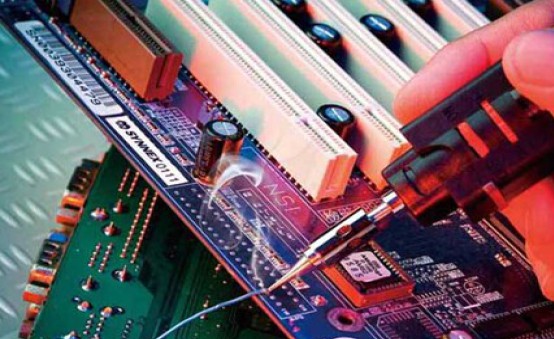The role and selection of flux in automatic soldering

In SMT applications, we often use soldering flux. According to the processes of laser soldering and soldering with a soldering iron, choosing a solder paste type flux is the most suitable. So, what is the function of solder paste? How to choose a good soldering paste?
The function of solder paste:
1. Remove surface oxides
When PCB boards come into contact with oxygen during production, the surface of the solder pads will begin to oxidize and be covered by a layer of oxide. The longer they are left to stand, the thicker the oxide layer on the surface of the solder pads. This is why older boards have poorer wetting effects during soldering. After applying paste on the surface of the solder pad, the oxide on the surface will be reduced, thereby achieving the goal of eliminating the oxide film and improving the wetting properties of the solder.
2. Reduce the surface tension of solder pads
The surface tension of the solder pad can affect the welding quality, and another function of solder paste is to reduce the tension of the material. The surface tension during the melting of tin material will prevent it from flowing towards the surface of the solder pad, affecting the normal wetting process. When the solder paste covers the surface of the tin material, it can reduce the surface tension of the liquid tin material and significantly improve the wetting performance.
In automatic soldering applications, the quality of the soldering effect is not only related to the soldering process, components, and PCB quality, but also to the selection of solder paste.
What factors should be considered when choosing a good solder paste?
1. Melting point matching: In order to match the use of solder, the melting point of the selected solder paste should be 10-30 ℃ lower than the melting point of the solder. On the contrary, if the melting point of the solder paste is too low than the melting point of the solder, it will melt too early and cause premature failure of the solder active ingredient.
2. The infiltration diffusion rate is faster than that of melted solder, usually requiring an expansion of around 90% or more.
3. The viscosity and specific gravity are lower than those of solder, and high viscosity makes infiltration and diffusion difficult. High specific gravity cannot cover the surface of solder.
4. During welding, there is no splashing of welding beads, and no toxic gas or strong irritating odor is produced.
5. The residue after welding is easy to remove and has characteristics such as non corrosive, non hygroscopic, and non-conductive.
6. Non stick, does not stick to hands after welding, and the solder joints are not easy to tip.
7. Stable storage at room temperature.
Compiled and published by Power Automation, please indicate the source when reprinting.
